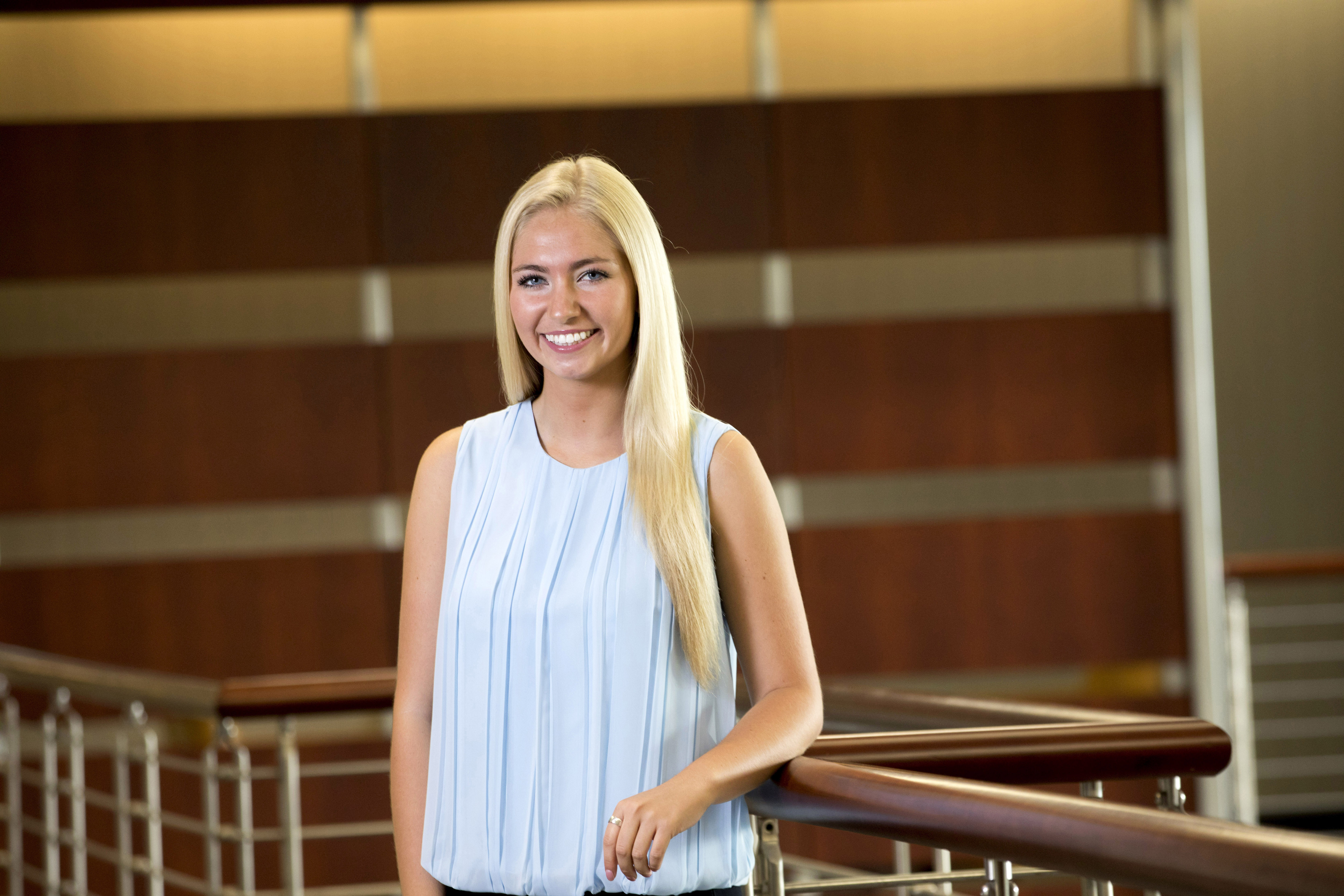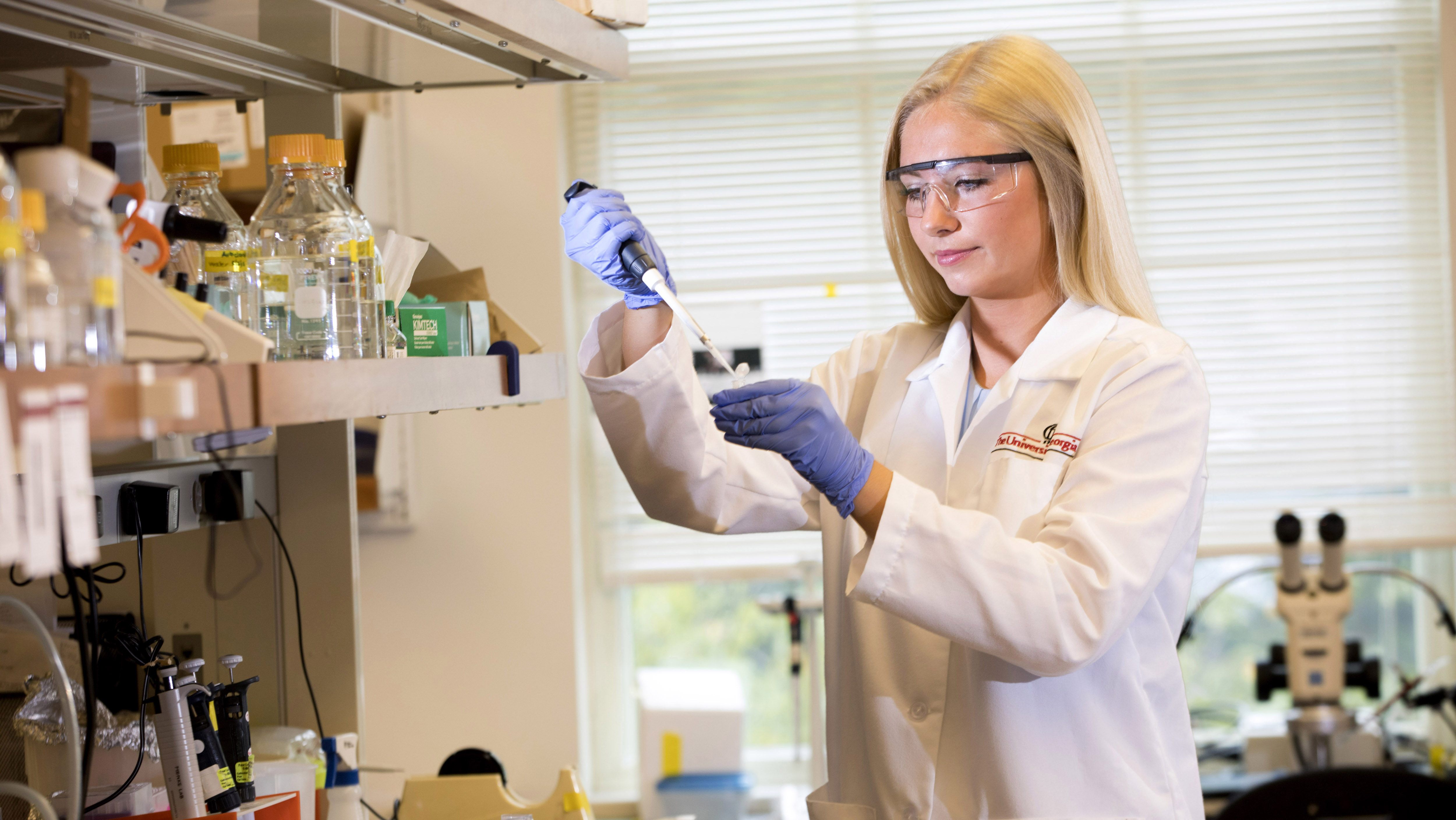Student Spotlight: Katie Irwin

1. What research are you currently conducting in the lab?
I began working in the developmental neuroscience lab of Dr. Jim Lauderdale in January of my freshman year. The lab is working to establish the Anolis sagrei (brown anole) lizard as a new model organism for the study of vertebrate photoreceptive structures, and I direct my own project investigating the development of the anole parietal eye, also known as the third eye.
The parietal eye is a non-visual, photosensitive parapineal organ found in most lizards, frogs, the tuatara, and some fish. The lizard parietal eye, located on the dorsal midline aspect of the head, is remarkably well developed, possessing a lens, cornea, and retina. Very little is currently known about this intriguing organ, and major questions remain about how the structure develops in the lizard. Is parietal eye development similar to that of the lateral eye? Does its formation employ gene networks common to both organs?
To address these questions, I am investigating the parietal eye’s morphological and molecular development compared to the lateral eye in the anole, hypothesizing that parietal and lateral eye development employ similar gene networks. I initially constructed a timeline of parietal eye morphogenesis for all stages of embryonic development as well as the hatchling and adult, providing a critical framework for the analysis I then began conducting on the molecular mechanisms employed in parietal eye formation, using immunofluorescence techniques.
To the best of my knowledge, my work presents for the first time a detailed view of the parietal eye structure and cell morphology in the adult and developing lizard embryo, as well as the first extensive analysis of gene expression in the parietal eye.

2. What are some of the big implications your research could potentially have in the world?
Understanding parietal eye development will provide a unique system, not present in humans or many other vertebrates, for gaining insight into mechanisms underlying formation of vertebrate eye structures. For instance, I have shown differences in the histogenesis of the parietal eye compared to the lateral eye that suggest a new, and very unexpected, pathway for lens induction. The parietal lens develops from neural ectoderm rather than from surface ectoderm as it does in the lateral eye, and this unique feature of the parietal eye allows the study of how lens structures can still develop from a different embryonic origin. Analyzing genes such as Pax6, Six3, and Sox2 in the parietal eye may shed light on the functions of crosstalk between the lens placode and optic vesicle in lateral eye formation, as the lens placode is absent in parietal eye development.
Better understanding of the specific roles of parietal eye regulatory networks could complement lateral eye studies to lead to future therapies for eye-related disorders. For instance, one condition known as aniridia is a panocular condition that involves malformation of many eye structures caused by mutations in the PAX6 gene. Only the lizard provides such an easily accessible, structurally relevant model for enhancing understanding of eye formation through its parietal eye not present in most other vertebrates.
3. In your opinion what is the most fascinating neuroscience research that has been published this year?
The recent discovery of a previously unidentified type of neuron in the human brain, the rosehip neuron, by scientists at the Allen Institute for Brain Science in Seattle and the University of Szeged in Hungary was particularly interesting to me. The cell, with its large axonal boutons and dense arborization, is named for its resemblance to a rose that has shed its petals. This GABAergic neuron subtype, which the researchers found synapses onto pyramidal neurons in the cortex, has never been seen in rodents. While the study did not definitively prove the absence of rosehip neurons in rodents, the likelihood that this neuron subtype is indeed absent in rodents has important implications for the use of the mouse as a model for human neurological disease and may help explain some instances in which drugs that worked in mice failed in clinical trials. Additionally, studies that analyze the presence/absence of the rosehip neuron in non-human primates and other animals could help lead to a better understanding of factors that set the human brain apart.
4. Why did you choose to go into neuroscience?
No more ironic unknown confounds scientists than the brain, the very organ that permits us to ponder its mysteries in the first place, so this collection of neurons that control the complexity of who I am is the subject that has consumed my interest since middle school. I’ve always loved tackling challenges and solving problems, and the field of neuroscience contains some of the biggest and most puzzling unanswered questions in science.
Beyond the mystery of the brain, its centrality to the human experience draws me to neuroscience. Conditions that affect the brain change the way people interpret and interact with the world. Because the brain controls things like emotion, memory, movement, sensation, and communication, neurological diseases are often particularly devastating.
The field of neuroscience thus expressly accommodates my interests in both medicine and research and my desire to pursue a career as a physician-scientist. Neuroscience provides an intersection of medical care for people with some of the body’s most intrusive diseases and the opportunity to explore unresolved questions that may have serious implications in the lives of many, in addition to unique ethical implications for society as a whole.
5. What is your favorite spot on UGA’s campus and why?
My favorite spot on campus is Herty Field. On a nice day, you can always find people picnicking or throwing a ball next to the fountain. It’s a great place to relax, study, hang out with friends, or enjoy a couple UGA traditions; jumping in the fountain and ringing the Chapel Bell right next to Herty Field are two of my favorites.
